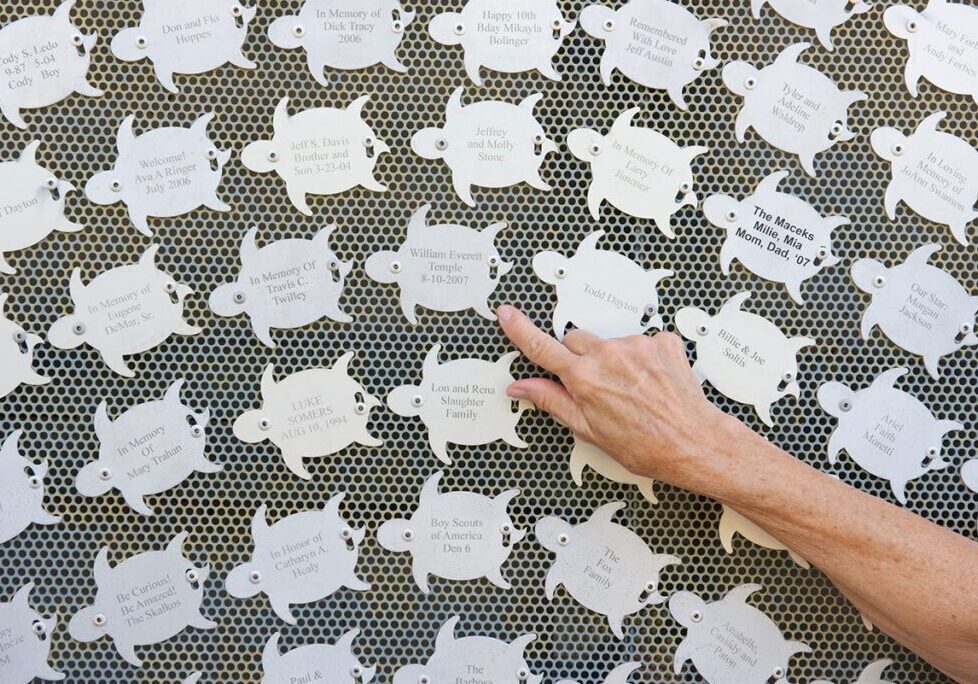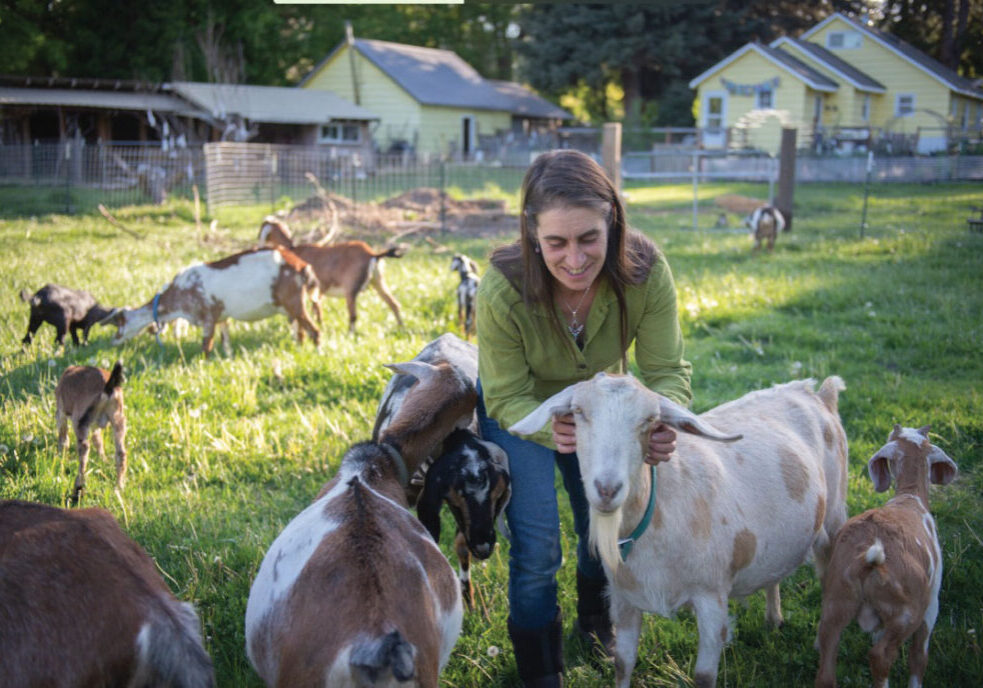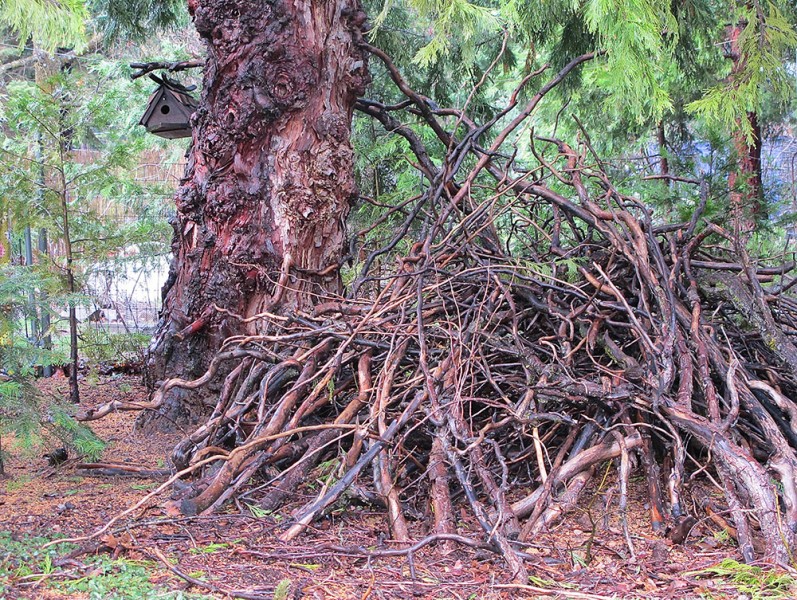 For more than a century, Audubon’s mission has been to conserve and restore natural ecosystems, focusing on birds, other wildlife, and their habitats, for the benefit of humanity and the earth’s biological diversity. Audubon offers these tips to turn your garden into a habitat that can become a sanctuary for birds and other wildlife.
For more than a century, Audubon’s mission has been to conserve and restore natural ecosystems, focusing on birds, other wildlife, and their habitats, for the benefit of humanity and the earth’s biological diversity. Audubon offers these tips to turn your garden into a habitat that can become a sanctuary for birds and other wildlife.
1. Grow native plants
Native plants are the basis for animal life in any given area. Birds and insects need the plants they co-evolved with in order to thrive. Native species are also adapted to local climates so they require less water, need less maintenance, and better adjust to shifts in climate. Learn about native plants at your local nursery and/or find information at the Lady Bird Johnson Wildflower Center’s website: http://www.wildflower.org/plants.
2. Reduce your pesticide and fertilizer use
Chemicals can have detrimental effects on insect and environmental health. Protect the birds and the bugs they eat by cutting down on the use of these products. Learn more about the dangers of pesticides in this article by BirdLife International: http://www.tinyurl.com/BirdLifeArticle.
3. Leave your yard alone, including those dead trees.
That’s right, it pays to be lazy. Birds love messy landscapes because they mimic their natural habitats. Dead trees, long grass, and discarded leaf piles all provide a natural source of insects and refuge. Research shows that small habitats can add up to a big difference.
“Many of us don’t realize that a dead tree, referred to as a ‘snag,’ offers many benefits for wildlife,” says Kendra Bainbridge, owner of Raven Tree Wild Bird & Nature Shop in Mt. Shasta, CA. “The rotting interior provides nesting opportunities for birds and mammals as well as their food sources, like larvae, solitary bees and other beneficial bugs. Consider leaving a few snags. A snag can be topped at 6-8 feet to reduce any hazard. Place a birdhouse on top or just leave it to its natural fate as a host to a beautiful array of life!”
Learn more in this Audubon article How to Create a Bird-Friendly Yard at http://www.tinyurl.com/BirdFriendlyYard.
Birdhouses offer valuable homes for the many species of birds that would otherwise nest in tree cavities and enclosures. Unfortunately, sometimes there aren’t enough natural holes to go around, especially in populated suburbs and cities. You can make a difference by installing avian architecture. “There are many cavity nesting birds that will take to a man-made nest box if placed properly,” advises Bainbridge. “Chickadees, nuthatches, titmice, wrens, swallows, bluebirds, woodpeckers, a few owl species, and kestrels, to name a few. Beyond providing valuable habitat for wild bird species, nesting boxes can be valuable to us, too: insect-eating species like bluebirds and swallows help control mosquitoes and other pests, while owls and kestrels can help keep rodents at bay.”
Certify Your Wildlife Garden
Whether you have an apartment balcony or a 20-acre farm, you can create a garden that attracts beautiful wildlife, conserves water and helps restore habitat in commercial and residential areas.
Altacal Audubon Society’s Neighborhood Habitat Certification Program
Audubon is working across the country to help make backyards more habitable for birds and other wildlife. Locally, the Altacal Audubon Society’s Neighborhood Habitat Certification Program is designed to educate and empower individuals in Butte, Glenn and Tehama counties to take action to restore and create habitat, one yard at a time. By collaborating with governmental agencies, private businesses, and local non-profits, they are helping residents convert lawns to natural, drought-tolerant California landscaping and habitat. For more information, visit http://www.altacal.org/neighborhood-habitat-certification-program.
National Wildlife Federation Certified Wildlife Habitat Program
By providing food, water, cover, and a place for wildlife to raise their young in a healthy habitat, you not only help wildlife, but you also qualify your yard to become an official Certified Wildlife Habitat®, joining an active community of over 400,000 wildlife gardeners across the country, recognized by National Wildlife Federation for your efforts on behalf of wildlife.
Certification also makes you a part of the Million Pollinator Garden Challenge, a national effort to restore critical habitat for pollinators in peril, and celebrates all of the hard work you’ve done to help the birds, butterflies, and other backyard wildlife. Find more information online here: http://www.nwf.org/How-to-Help/Garden-for-Wildlife/Certify-Your-Wildlife-Garden.aspx
Remember, what’s good for birds is also good for people. Here are some possible impacts of your native plant garden:
- 532: Varieties of butterflies and moths supported by native oak trees, as compared to only 5 butterfly and moth species supported by non-native ginkgo trees.
- 96: Percentage of land birds that rely on insects to feed chicks.
- 1,200: Number of crops that depend on pollinators to grow.
- 40 million: Acres of lawn in the U.S. currently.
- 80 million: Pounds of pesticides applied to lawns in the U.S. annually. Native plants, on the other hand, support a balance of predator and prey and thrive without pesticides.
- 800 million: Gallons of gas used annually by lawn mowers. This produces significant amounts of carbon dioxide and other greenhouse gases driving climate change.
Sections reprinted with permission of the National Audubon Society, http://www.audubon.org.
Posted in: Community
Comment Policy: All viewpoints are welcome, but comments should remain relevant. Personal attacks, profanity, and aggressive behavior are not allowed. No spam, advertising, or promoting of products/services. Please, only use your real name and limit the amount of links submitted in your comment.
You Might Also Like...

We’re Hoping for a FLOOD! Help us fill Turtle Bay with a river—of Turtles!
Want to own your very own turtle? You can—and it comes with perks. It will make you famous, plus you will be doing a good deed, too. Purchasing a turtle […]
Just Keep Swimming: The Surprising Benefits of Winter Swim Lessons
The American Red Cross estimates that over 90% of families spend at least some time in the water during the summer months, so it makes sense that summer is the […]

Four Women Farmers Continue The North State Legacy of Joyful Growing
From flowers to onions and seeds to goats, four women farmers in the North State are continuing this region’s legacy of farming the land and connecting with their communities. Kalan […]

Your Local Library is a Hub of Activity
If a library isn’t your idea of the “happening place” in town, it’s time to walk back through the doors of your local branch. Gayle Harrington, Cottonwood’s director of library […]




